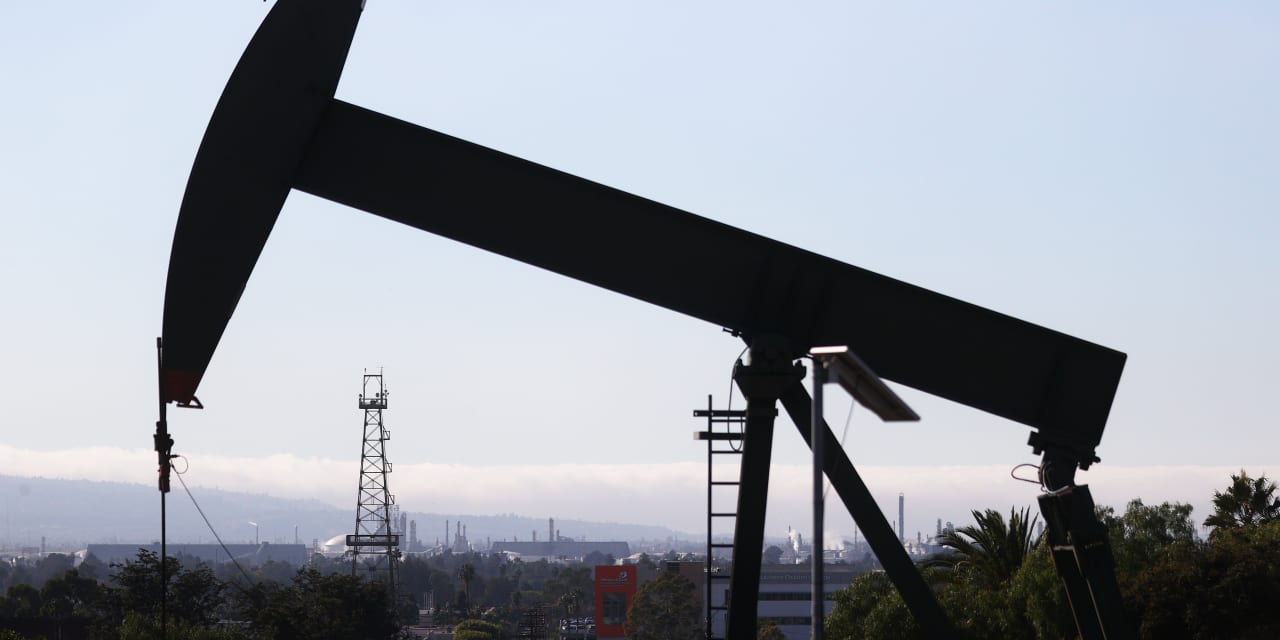Oil futures on Monday were on track to post their first loss in four sessions, pulling back from a pop to the upside in Asian trading hours brought on by a drone attack that killed three U.S. troops in Jordan.
A wider Middle East conflict could threaten crude supplies, leaving oil traders on edge, but some analysts expect the U.S. to avoid further escalation of the conflict in the region.
Concerns over China’s economy, and the outlook for energy demand, also helped to keep any oil price gains in check.
Price moves
-
West Texas Intermediate crude for March delivery
CL00,
-1.38% CL.1,
-1.38% CLH24,
-1.38%
fell $1.25, or 1.6%, to $76.76 a barrel on the New York Mercantile Exchange after posting gains in each of the past three trading sessions. -
March Brent crude
BRNH24,
-1.28% ,
the global benchmark, was down 97 cents, or 1.2%, at $82.58 a barrel on ICE Futures Europe. April Brent
BRN00,
-1.30% BRNJ24,
-1.30% ,
the most actively traded contract, was down 97 cents, or 1.2%, at $81.98 a barrel. -
February gasoline
RBG24,
-1.94%
declined by 2.1% to $2.2464 a gallon, while February heating oil
HOG24,
-0.19%
lost 0.5% to $2.8286 a gallon. -
Natural gas for February delivery
NGG24,
-8.48%
traded at $2.478 per million British thermal units, down 8.6%, ahead of the contract’s expiration at the end of the session.
Market drivers
WTI and Brent crude both popped by more than $1 a barrel in Asian trading hours as traders reacted to the drone attack, which killed three U.S. service members and injured more than 30.
U.S. officials blamed the attack on an Iran-backed militia. President Joe Biden vowed retaliation.
The deaths of U.S. troops means the Israel-Hamas war “may have entered a new era of risk when it comes to global oil supplies,” Phil Flynn, an analyst at Price Futures Group, told MarketWatch. While the initial price surge faded, “the fundamental outlook is getting dangerously bullish,” he said.
On the other hand, the U.S. administration may choose to “contain the escalation and carry out a limited and local response, for fear of entering the electoral race with more internal pressure to end the raging wars,” said Samer Hasn, market analyst and research team member at XS.com, in emailed commentary.
In any case, “it appears that oil markets are still looking more worriedly at the future of oil demand from China than any other geopolitical factor,” Hasn said.
Oil futures rallied last week to their highest since November, but with gains attributed in part to production outages in the U.S. and more upbeat expectations around economic growth.
Meanwhile, concerns about the risk of miscalculation in the Middle East are growing, “as rational actors may unintentionally become entangled in an escalatory spiral,” Stephen Innes, managing director at SPI Asset Management, said in a note.
“Given the inherent complexity of Middle East conflicts, achieving a stable outcome in the region appears unlikely at this stage, signaling the potential for continued instability with broad global repercussions where higher oil prices are the chief concern, especially in a severe supply disruption scenario, where maritime traffic in the Strait of Hormuz is chocked leading to significant rise in prices,” he wrote.
Read the full article here





